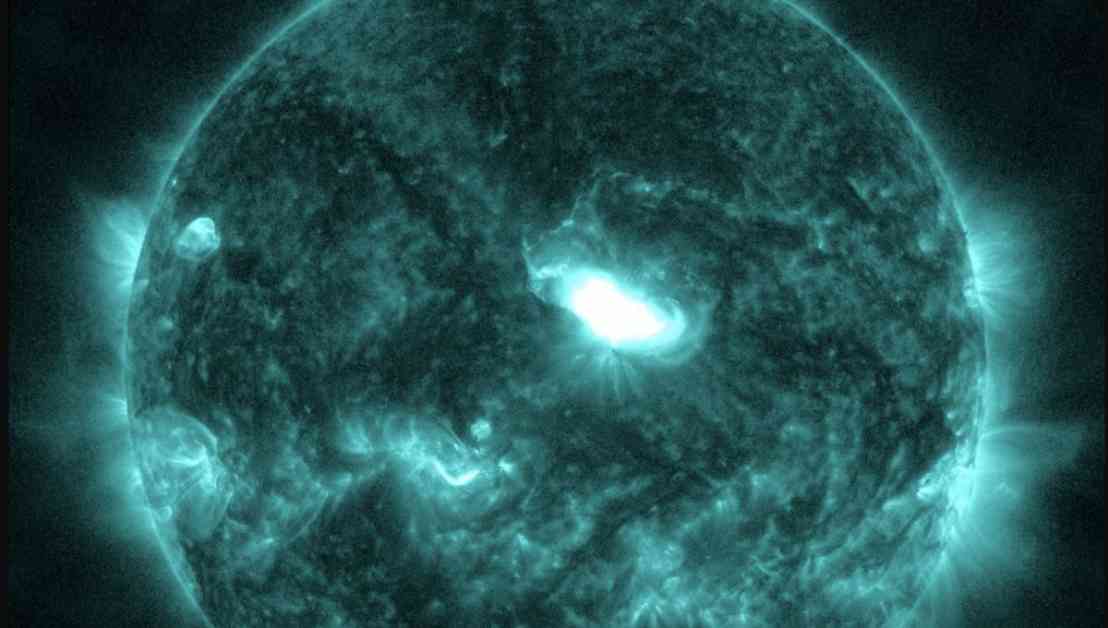A massive geomagnetic storm is expected to hit Earth on Thursday, triggered by a solar flare and coronal mass ejection that occurred on October 8. The National Oceanic and Atmospheric Administration (NOAA) has warned that this G4-class storm could have severe impacts, including disruptions to power grids, satellites, GPS navigation, and critical infrastructure technology.
One of the most exciting effects of this geomagnetic storm is the potential visibility of auroras at much lower latitudes than usual. NOAA predicts that the northern lights may be visible over a large part of the northern half of the country, possibly even as far south as Alabama to northern California on Thursday.
The solar flare that caused this coronal mass ejection was classified as an X 1.8-class flare, the strongest type emitted by the sun. Solar flares occur when magnetic field lines on the sun snap back into place violently, sometimes accompanied by CMEs – fast-moving plasma blobs that can take days to reach Earth. When these CMEs hit our planet, they can cause geomagnetic storms, disrupting technology and creating widespread auroras.
While there is little individuals can do to prepare for this storm, aurora chasers are advised to get away from city lights for the best viewing experience. Viewing auroras through a phone camera can enhance the colors and make the experience even more spectacular.
These solar events are more common during solar maximum, the peak of the sun’s 11-year activity cycle. While the current cycle’s solar maximum was initially predicted for 2025, some scientists believe it may be happening now. Only time will tell as researchers monitor solar activity.
In addition to Earth, the bright comet C/2023 A3 (Tsuchinshan-ATLAS) is also in the path of the incoming CME. There is a possibility that the comet’s tail may be affected by the solar eruption, similar to what happened to comet 12P/Pons-Brooks earlier this year. Skywatchers will have to wait until the comet emerges from the sun’s glare later this weekend to see if its tail survived.
This event is a reminder of the dynamic and powerful nature of our sun and the impact it can have on our planet. Stay tuned for updates on the geomagnetic storm and potential aurora sightings as Thursday approaches.










